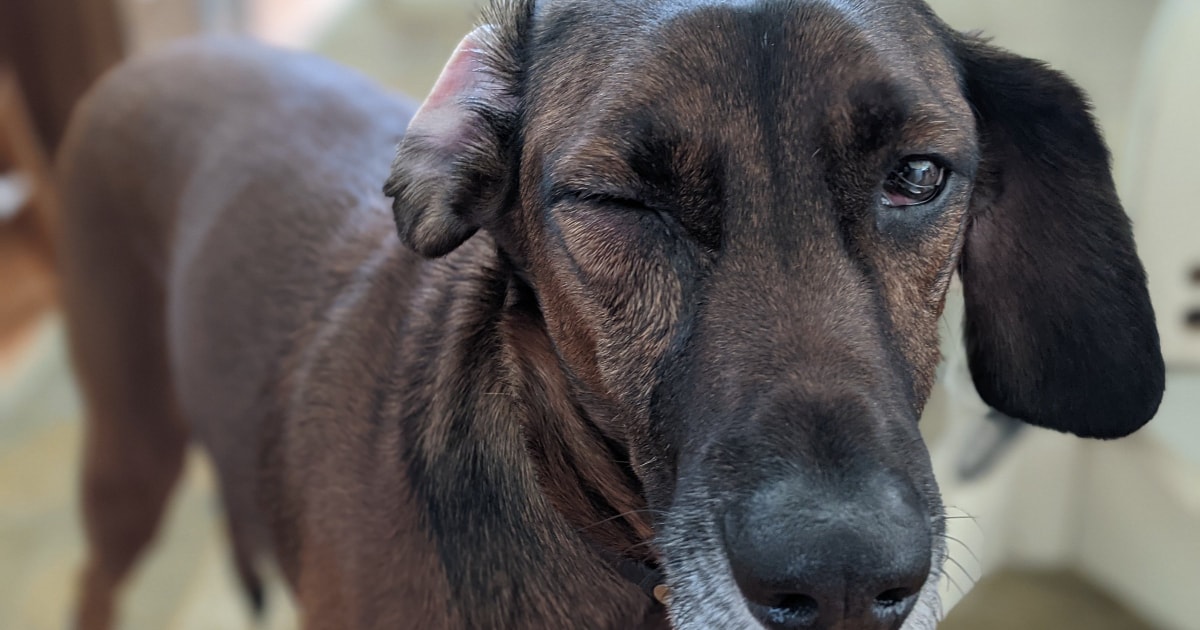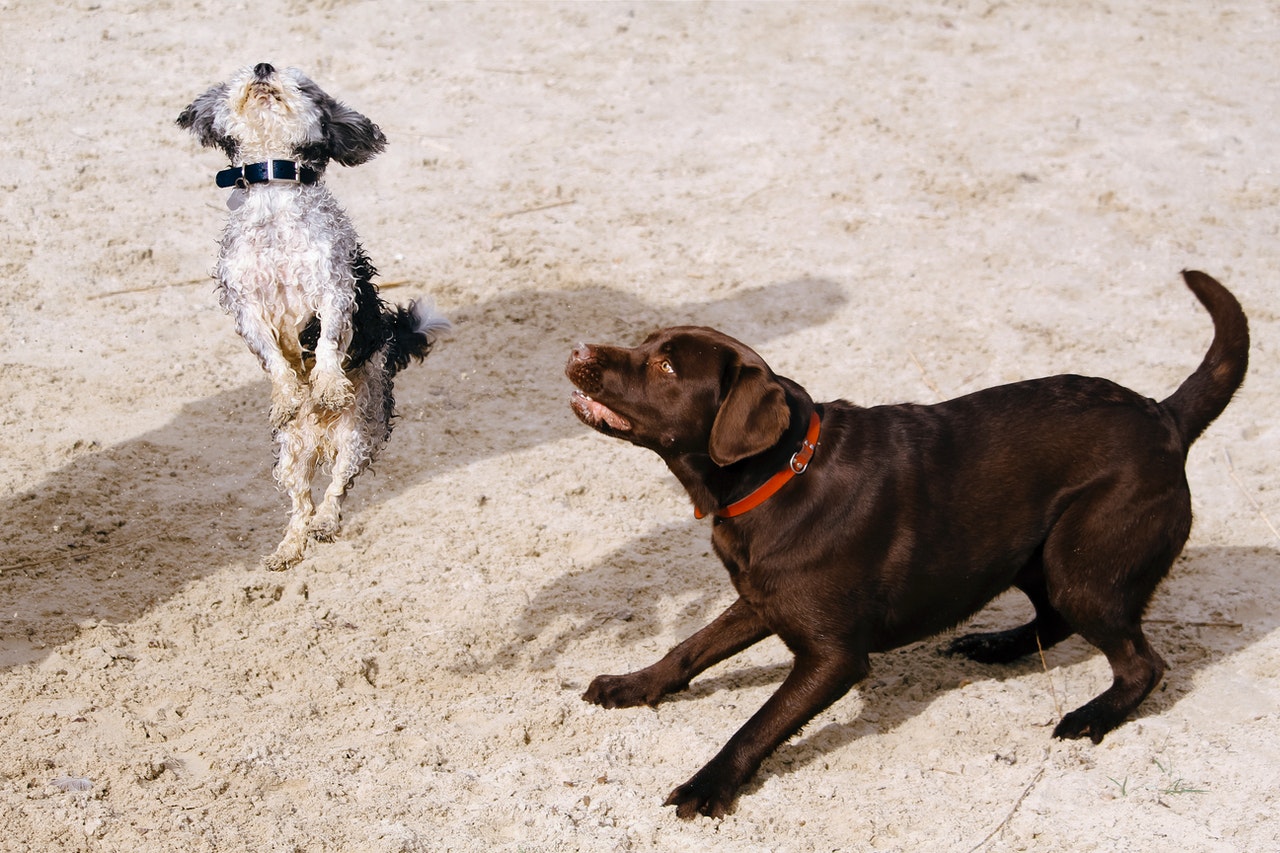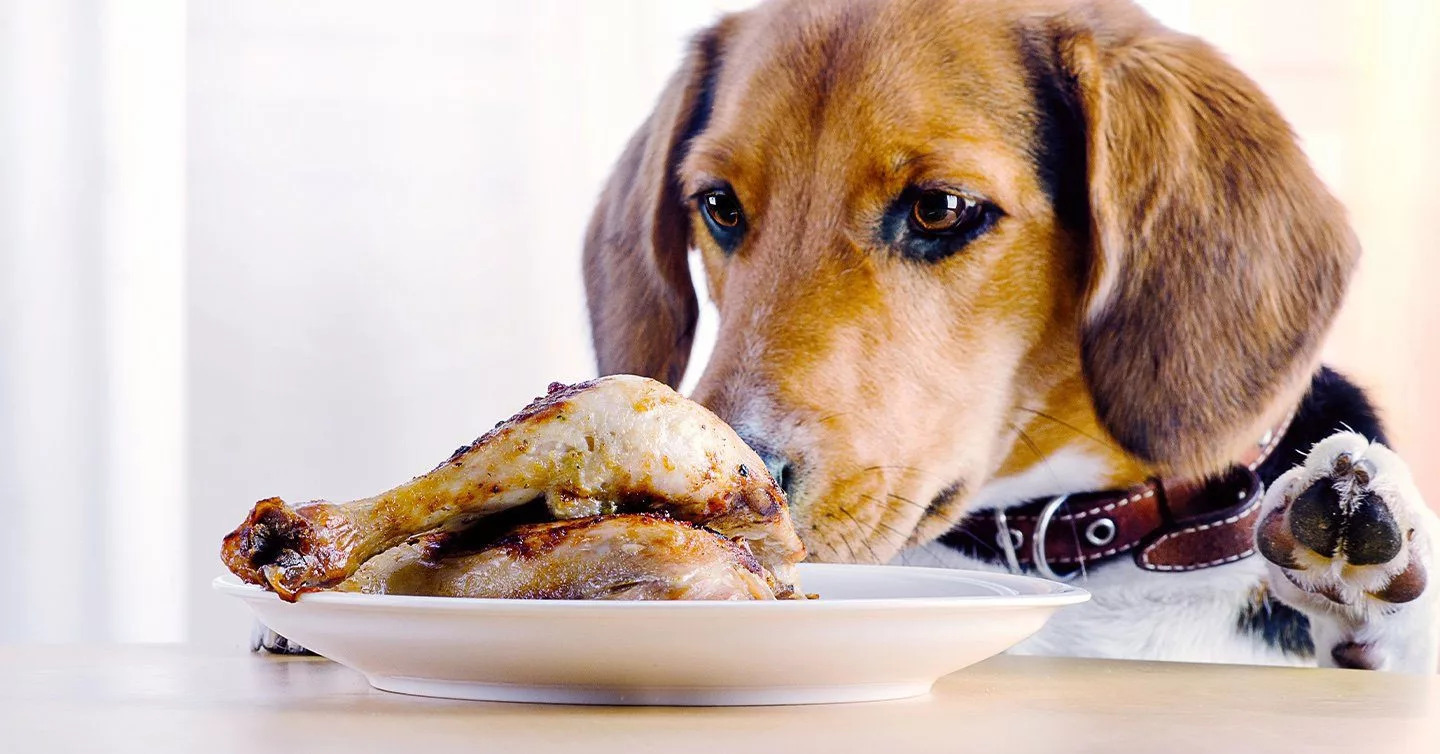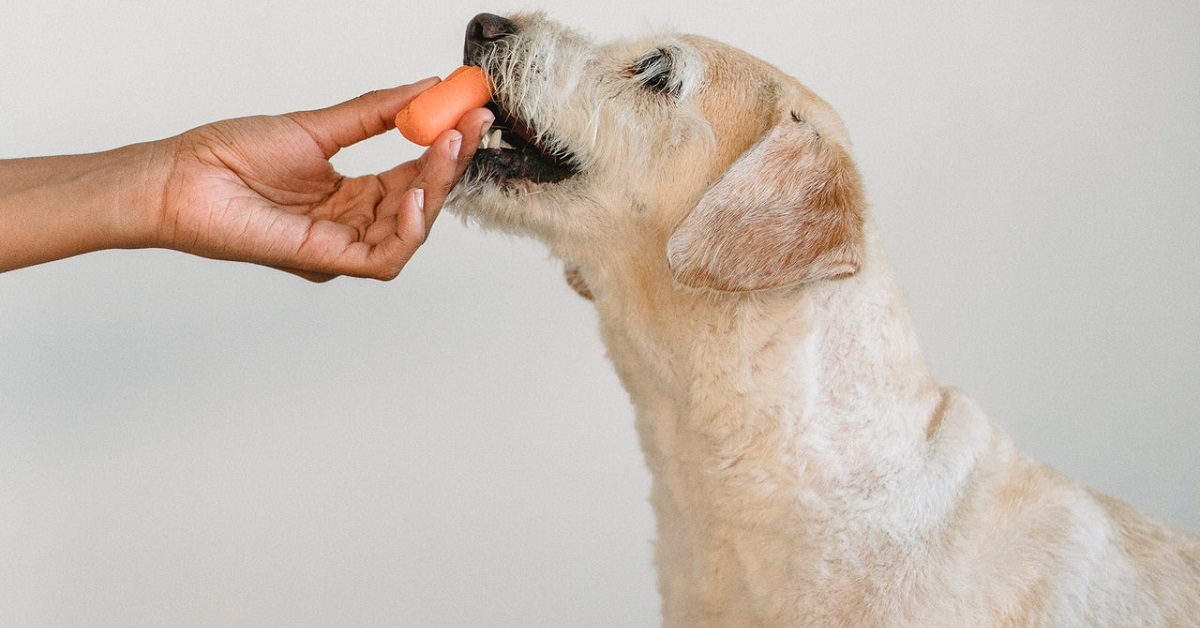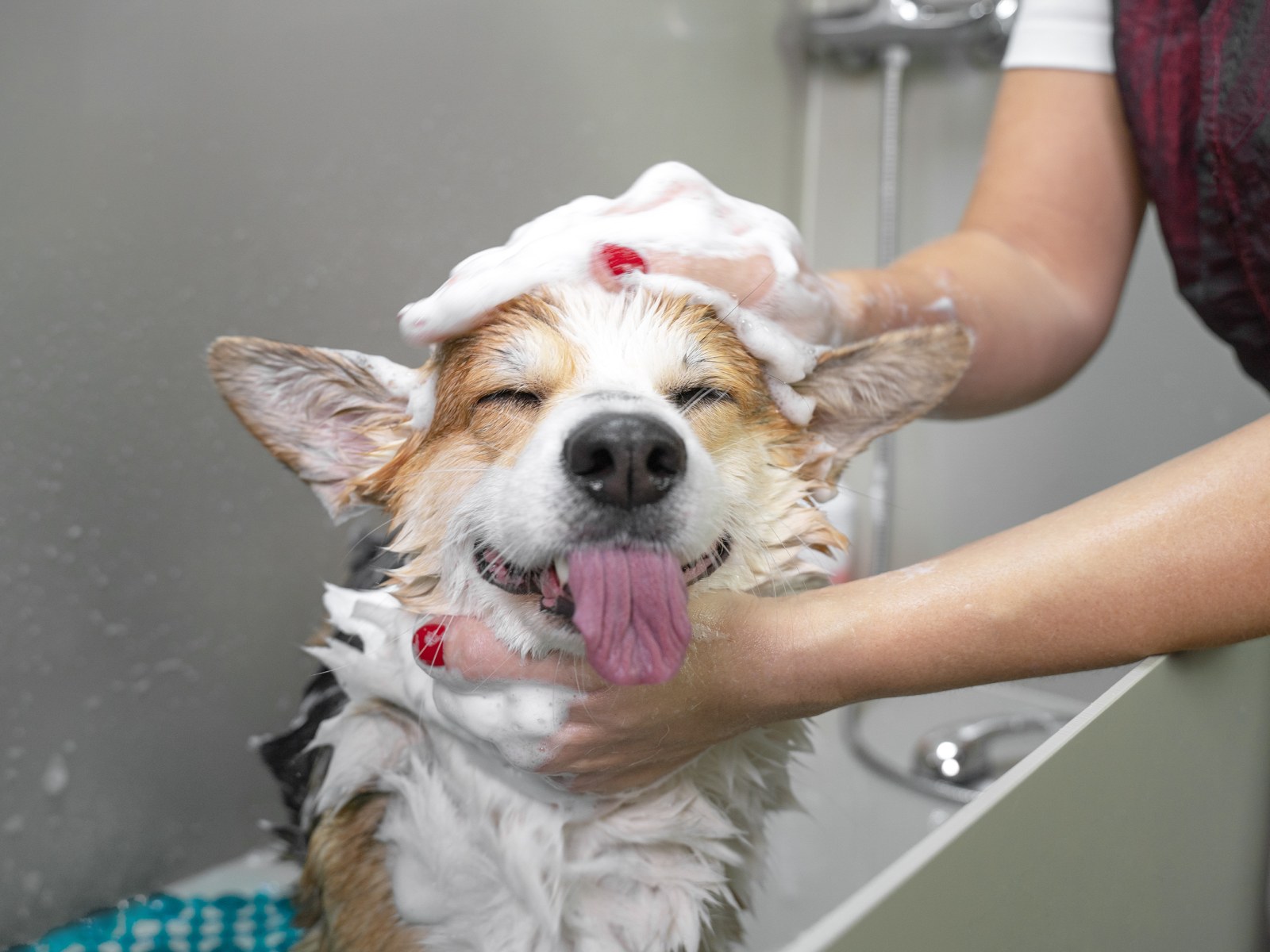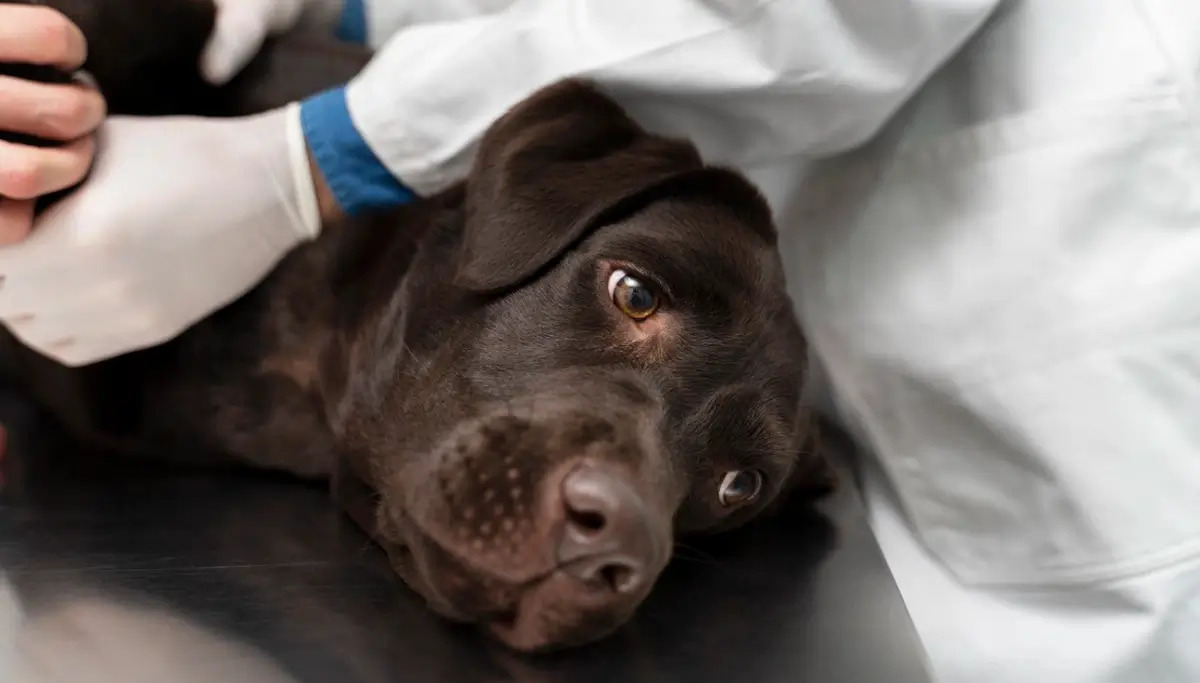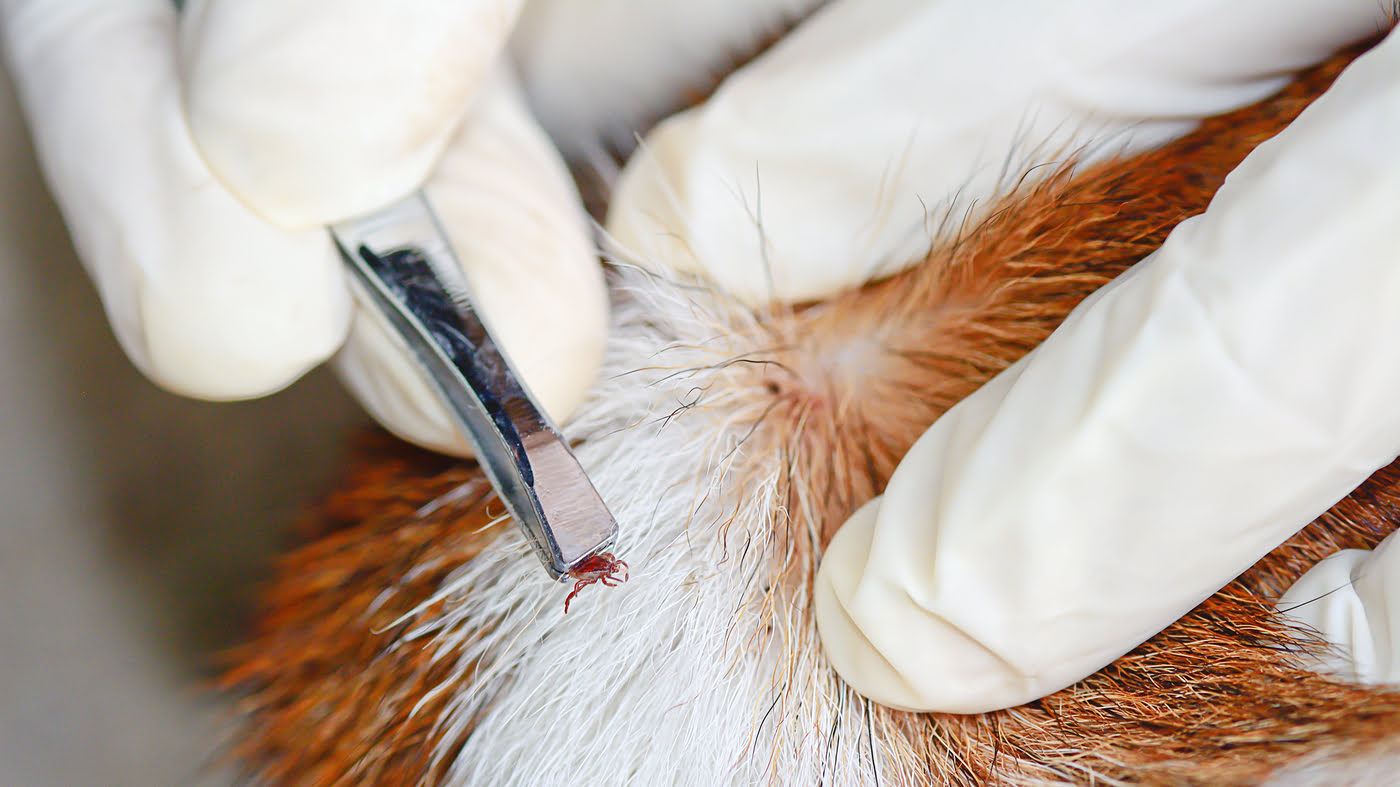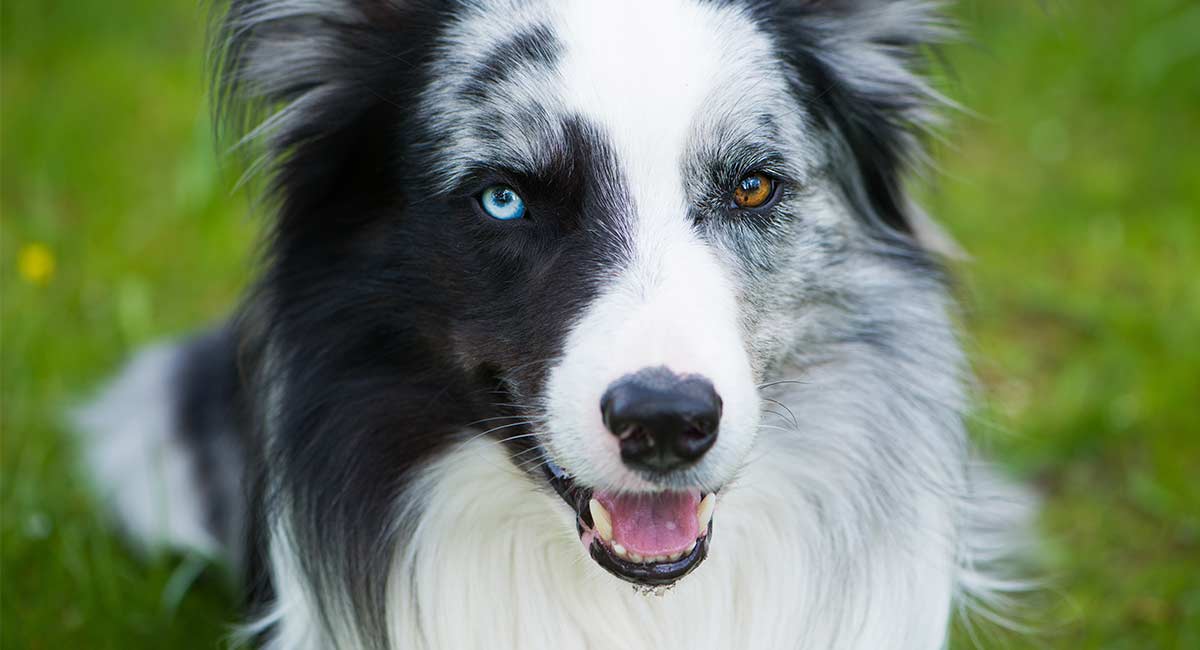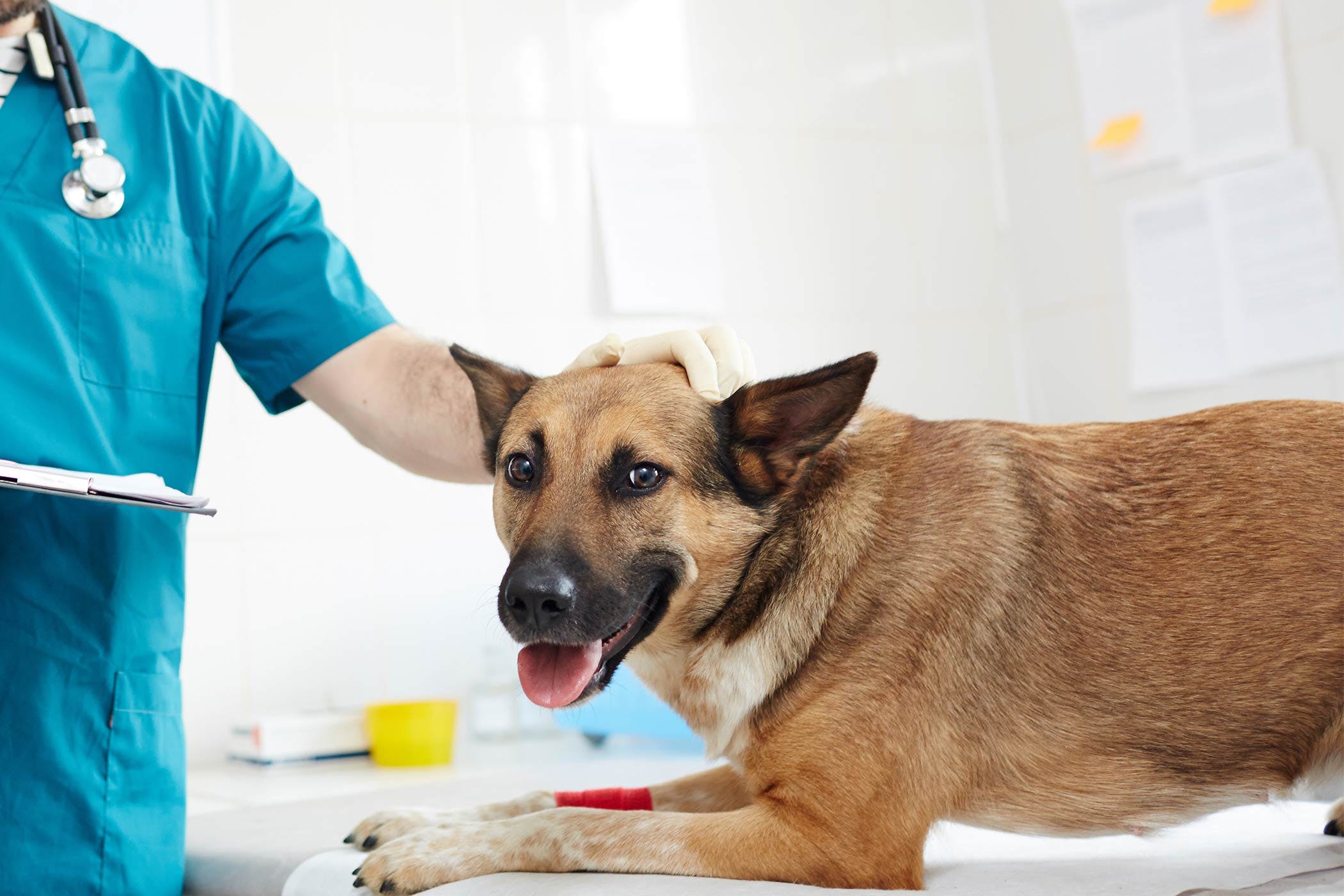Home>Health & Wellness>Common Health Issues>What To Do When Your Dog Has A Dead Tick In Its Fur
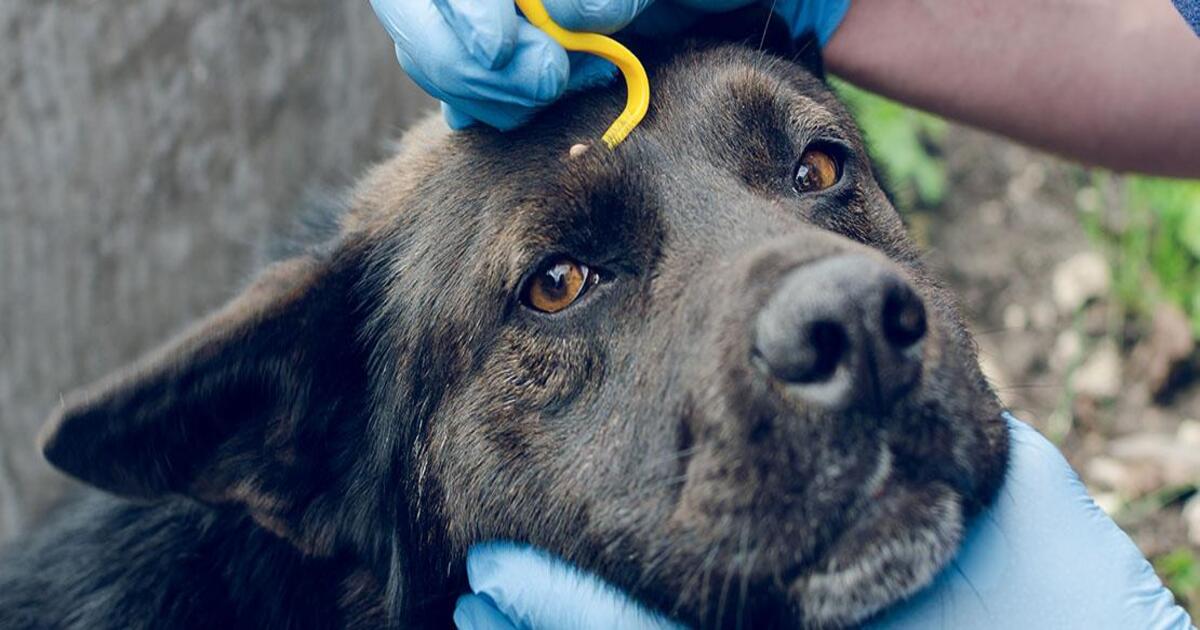

Common Health Issues
What To Do When Your Dog Has A Dead Tick In Its Fur
Published: February 3, 2024
Learn how to safely remove a dead tick from your dog's fur and prevent common health issues with our expert tips and advice. Keep your furry friend healthy and happy!
(Many of the links in this article redirect to a specific reviewed product. Your purchase of these products through affiliate links helps to generate commission for Pawsomeoldies.com, at no extra cost. Learn more)
Table of Contents
Introduction
Discovering a dead tick nestled in your dog's fur can be a disconcerting experience for any pet owner. Ticks are notorious for transmitting diseases, and the presence of a dead tick may raise concerns about potential health risks for your beloved canine companion. However, it's essential to approach this situation with a calm and methodical mindset. By following the proper steps to safely remove the tick and care for your dog, you can effectively address the issue and minimize any associated risks.
In this comprehensive guide, we will walk you through the necessary steps to handle the situation when your dog has a dead tick in its fur. From gathering the essential supplies to safely removing the tick and monitoring your dog's well-being, we'll provide you with the knowledge and confidence to navigate this common health issue.
Ticks are prevalent in many outdoor environments, and dogs are particularly susceptible to encountering these parasites during walks, hikes, or playtime in grassy or wooded areas. While preventing tick bites is crucial, it's not uncommon for dogs to pick up these unwanted hitchhikers despite our best efforts. Therefore, knowing how to respond when a dead tick is found on your dog is an important skill for every pet owner.
By following the steps outlined in this guide, you'll not only address the immediate concern of the dead tick but also ensure that your dog receives the necessary care and attention to safeguard its well-being. Let's embark on this informative journey to learn how to effectively handle the situation when your dog has a dead tick in its fur.
Read more: What To Do When Your Dog Has Fleas
Step 1: Gather necessary supplies
Before embarking on the task of removing a dead tick from your dog's fur, it's essential to gather the necessary supplies to ensure a safe and effective process. Here's what you'll need:
-
Fine-Tipped Tweezers: Opt for a pair of fine-tipped tweezers specifically designed for tick removal. These tweezers allow for precise gripping and removal of the tick without causing unnecessary trauma to your dog's skin.
-
Rubbing Alcohol or Antiseptic Wipes: Having rubbing alcohol or antiseptic wipes on hand is crucial for disinfecting the area after the tick has been removed. This helps minimize the risk of infection and ensures proper hygiene.
-
Disposable Gloves: Wearing disposable gloves during the tick removal process is important for both your safety and that of your dog. Gloves help prevent direct contact with the tick and reduce the risk of exposure to any potential pathogens it may carry.
-
A Sealed Container: Prepare a small container with a secure lid, such as a screw-top jar or a ziplock bag. This will be used to store the dead tick after removal. Keeping the tick allows for identification in case your dog develops any tick-borne illnesses, and it can also be helpful for your veterinarian's assessment.
-
Treats and Distractions: It's beneficial to have your dog's favorite treats or toys on hand to provide comfort and distraction during the tick removal process. This can help keep your dog calm and cooperative, making the task easier for both of you.
By ensuring that you have these supplies readily available, you'll be well-prepared to proceed with the subsequent steps of removing the dead tick from your dog's fur and providing the necessary aftercare. With these supplies at your disposal, you can approach the task with confidence and focus on ensuring the well-being of your canine companion.
Step 2: Remove the dead tick from your dog's fur
Once you have gathered the necessary supplies, it's time to carefully remove the dead tick from your dog's fur. Follow these steps to ensure a safe and effective tick removal process:
-
Prepare the Area: Find a well-lit and comfortable space to carry out the tick removal process. It's important to choose a location where your dog feels at ease, as this can help minimize stress and make the experience more manageable for both of you.
-
Put on Disposable Gloves: Before handling the tick, put on disposable gloves to protect yourself from direct contact with the parasite. This precaution is essential for reducing the risk of potential pathogens being transmitted from the tick to you.
-
Comfort Your Dog: Approach your dog calmly and reassure them with gentle words and soothing gestures. Offering a few of their favorite treats or a familiar toy can help keep them relaxed and cooperative during the tick removal process.
-
Grasp the Tick with Tweezers: Using fine-tipped tweezers, carefully grasp the tick as close to the skin's surface as possible. Be gentle and steady to avoid crushing the tick, as this can release harmful bacteria or pathogens.
-
Remove the Tick: With a firm and even pressure, pull the tick straight out without twisting or jerking. It's important to ensure that the entire tick is removed, including its mouthparts, to minimize the risk of infection or irritation.
-
Store the Tick: Place the removed tick in a sealed container, such as a screw-top jar or a ziplock bag, for future identification if necessary. This step is valuable in case your dog develops any tick-borne illnesses, as it allows for proper assessment and treatment by your veterinarian.
-
Disinfect the Area: After the tick has been successfully removed, use rubbing alcohol or antiseptic wipes to clean the area where the tick was attached. This helps prevent potential infection and promotes proper hygiene.
-
Comfort Your Dog: Once the tick has been safely removed and the area has been disinfected, offer your dog reassurance and comfort. Praise them for their cooperation and provide additional treats or affection to reinforce a positive experience.
By following these steps, you can effectively remove the dead tick from your dog's fur while prioritizing their comfort and well-being. Remember to remain patient and calm throughout the process, as this can help alleviate any stress or anxiety for both you and your dog. After successfully removing the tick, proceed to the next step of cleaning the area and monitoring your dog for any signs of illness.
Step 3: Clean the area
After successfully removing the dead tick from your dog's fur, the next crucial step is to thoroughly clean the area where the tick was attached. This process is essential for promoting proper hygiene, minimizing the risk of infection, and ensuring the well-being of your canine companion.
Here's how to effectively clean the area:
-
Inspect the Site: Carefully examine the area where the tick was attached to ensure that no remnants of the tick's mouthparts remain embedded in your dog's skin. If you notice any residual parts, use the fine-tipped tweezers to gently remove them, taking care not to cause any discomfort to your dog.
-
Use Antiseptic Solution: Dampen a clean cloth or cotton ball with an antiseptic solution, such as povidone-iodine or chlorhexidine. Gently dab the area where the tick was attached to cleanse the skin and disinfect the site. Antiseptic solutions help eliminate any lingering bacteria and reduce the risk of infection.
-
Apply a Soothing Ointment (Optional): If the area appears irritated or inflamed, consider applying a thin layer of a pet-safe soothing ointment, such as aloe vera gel or a specialized tick bite relief product. This can help alleviate any discomfort and promote healing.
-
Monitor for Redness or Swelling: Keep a close eye on the cleaned area for any signs of redness, swelling, or unusual discharge. These could indicate a potential infection, and prompt veterinary attention may be necessary if such symptoms arise.
-
Dispose of Materials Safely: After completing the cleaning process, carefully dispose of any used materials, such as cotton balls or cloths, in a secure trash receptacle. Proper disposal helps prevent the spread of potential pathogens and maintains a clean environment.
By diligently cleaning the area where the tick was attached, you are taking proactive measures to safeguard your dog's health and well-being. This thorough cleaning process, combined with the earlier steps of tick removal and disinfection, forms a comprehensive approach to addressing the presence of a dead tick on your dog.
After completing the cleaning process, continue to monitor your dog for any changes in behavior or health. While most dogs do not experience complications after a tick removal, it's important to remain vigilant for any signs of illness, such as lethargy, loss of appetite, or unusual symptoms. If you have any concerns about your dog's well-being, don't hesitate to seek guidance from your veterinarian.
By following these steps and providing attentive care, you can effectively address the situation when your dog has a dead tick in its fur, ensuring the best possible outcome for your beloved pet.
Step 4: Monitor your dog for any signs of illness
After addressing the presence of a dead tick in your dog's fur and completing the necessary steps for removal and aftercare, it's crucial to monitor your dog for any signs of illness in the aftermath of the tick encounter. While most dogs do not experience immediate complications after a tick removal, it's important to remain vigilant and attentive to your dog's well-being in the days following the incident.
Here's how to effectively monitor your dog for any signs of illness:
-
Observe Behavioral Changes: Pay close attention to your dog's behavior and demeanor. Look for any unusual changes, such as increased lethargy, reluctance to move, or a noticeable decrease in activity levels. Behavioral changes can be indicative of underlying health issues that may require veterinary attention.
-
Check for Physical Symptoms: Regularly inspect your dog for any physical symptoms that may signal illness. This includes monitoring for signs of skin irritation or inflammation at the site where the tick was attached, as well as checking for any unusual lumps or bumps on your dog's body. Additionally, keep an eye out for changes in appetite, excessive scratching, or any abnormalities in your dog's coat.
-
Monitor Vital Signs: While it may not always be feasible to measure your dog's vital signs at home, being attuned to changes in breathing patterns, heart rate, and body temperature can provide valuable insights into your dog's overall health. If you notice any significant deviations from normal vital signs, it's advisable to seek professional veterinary guidance.
-
Be Aware of Tick-Borne Disease Symptoms: Familiarize yourself with the symptoms of common tick-borne diseases, such as Lyme disease or ehrlichiosis, which can manifest in dogs following a tick bite. These may include lameness, joint pain, fever, and general malaise. If you observe any of these symptoms, prompt veterinary evaluation is essential for accurate diagnosis and treatment.
-
Consult Your Veterinarian: If you have any concerns about your dog's health or notice any worrisome symptoms, do not hesitate to consult your veterinarian. Professional guidance and timely intervention can play a crucial role in addressing potential health issues and ensuring the well-being of your dog.
By actively monitoring your dog for any signs of illness and promptly addressing any concerns that arise, you can take proactive steps to safeguard your dog's health following a tick encounter. Remember that early detection and intervention are key to mitigating potential health risks associated with tick-borne diseases, and your attentiveness as a pet owner plays a vital role in ensuring the ongoing health and happiness of your canine companion.
Read more: What To Do If Your Dog Has Ticks
Conclusion
In conclusion, discovering a dead tick in your dog's fur may initially evoke concern and uncertainty, but by following the outlined steps, you can effectively address this common health issue with confidence and care. From gathering the necessary supplies to safely removing the tick, cleaning the affected area, and monitoring your dog's well-being, each step plays a crucial role in ensuring the best possible outcome for your beloved pet.
It's important to recognize that encountering ticks is a prevalent occurrence for dogs, especially those who enjoy outdoor activities. Despite our best efforts to prevent tick bites, these resilient parasites can still find their way onto our canine companions. Therefore, being equipped with the knowledge and preparedness to handle such situations is an essential aspect of responsible pet ownership.
By diligently following the steps outlined in this guide, you not only address the immediate concern of the dead tick but also demonstrate your commitment to your dog's well-being. The thorough approach to tick removal, coupled with attentive aftercare and vigilant monitoring, reflects the dedication and love that pet owners have for their furry friends.
Furthermore, the emphasis on proactive measures, such as cleaning the affected area and monitoring for signs of illness, underscores the importance of preventive healthcare for dogs. By staying attuned to your dog's health and promptly addressing any concerns, you play a pivotal role in safeguarding their overall well-being and mitigating potential health risks associated with tick encounters.
Ultimately, the journey of addressing a dead tick in your dog's fur is a testament to the bond between pet and owner, highlighting the commitment to providing the best possible care and protection for our canine companions. By arming yourself with the knowledge and resources to navigate such situations, you empower yourself to be a proactive and informed advocate for your dog's health.
As you embark on this informative journey, may you approach each step with patience, compassion, and a deep-rooted dedication to the well-being of your beloved dog. With the guidance provided in this comprehensive guide, you are well-prepared to navigate the situation when your dog has a dead tick in its fur, ensuring that your faithful companion receives the care and attention they deserve.


